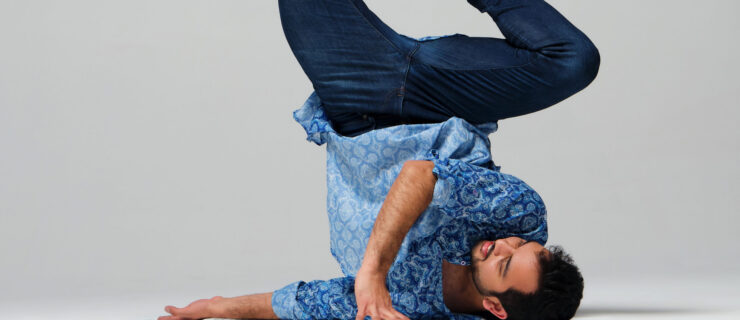How Anxiety and Depression Can Affect Your Ability to Learn Choreography
Over the course of her career, Tia Ungar, a dancer, cheerleader, and cheer coach based in the United Kingdom, has dealt with chronic anxiety. When her anxiety peaks, it’s a challenge to learn and remember choreography.
“When I was at my worst with my anxiety, even just being in a dance class was quite an anxious thing for me,” Ungar says. “In trying to calm myself down and be present, there was not always much space left for me to remember what I was physically meant to be doing.”
Learning and retaining choreography and corrections can be challenging for any dancer. But certain mental health conditions—like anxiety, depression, ADHD, OCD, and PTSD, to name a few—can make it even more difficult to process and retrieve memories. Understanding how these conditions impact the brain, and finding ways to both address those changes and improve overall memory, can help dancers cope.
How Mental Health Affects Memory
The effects of mental health on memory might differ based on the nature of the mental health condition, according to Paula Thomson, a clinical psychologist who works with dancers and is a professor at California State University, Northridge.
Depression affects the prefrontal cortex of the brain, “which is very involved in memory processing and retrieval,” Thomson says. That can make the mind feel less sharp, as well as disrupt hunger and sleep cycles. Without proper nutrition and rest, a dancer will be even less equipped to function at maximum memory capacity.

Anxiety-related conditions often result in divided focus, which means a person is attending to both the task at hand and their experience of anxiety. “When people have an anxiety disorder, they feel the anxiety so acutely that they can’t trust themselves to learn, because they just are so anxious about the catastrophic ‘what ifs,’ ” Thomson explains.
Some dancers might also dissociate as a coping mechanism for very high anxiety. Dissociation refers to a state of disconnection where an individual feels somehow separated from the present moment or their sense of self. “The memory area of the brain, the hippocampus, kind of shutters on and off because the anxiety dosing is so high,” Thomson says, which can cause memory gaps.
Tools for Dancers
When mental health issues lead to memory troubles, “step one is to recognize and attend to self-care,” Thomson says. If the problem is relatively mild, there are some tactics you can practice on your own. To calm anxiety, Ungar recommends taking a series of steadying breaths, which can help regulate the nervous system, leading to a decrease in the physical symptoms of anxiety. Thomson also suggests starting each day with an internal scan to gauge your physical and mental wellness, so you can then implement self-regulation skills to help you feel more present. Examine things like your anxiety levels, emotions, and appetite.
“If it becomes a persistent problem, seek professional help,” Thomson says. Consider reaching out to a mental health professional with experience working with dancers, creatives, or athletes, who can provide advice and coping strategies tailored to you.

To help improve memory, Kathleen McGuire Gaines—a former dancer and the founder of Minding the Gap, an organization focused on mental health advocacy within the dance industry—recommends using visualization techniques. Mentally running through difficult choreographic sequences and picturing yourself mastering them, for example, can help cement those sequences in your memory. “There’s been a lot of research done on how effective visualization is and the way it connects your mind and your body,” she explains.
Ungar agrees, adding that listening to the music aided her visualization practice. “Just getting used to the music really helped me, when I was in those situations where my anxiety was high and I was more stressed, to rely on memory a bit more,” she says.
McGuire Gaines encourages dancers to ask questions if the choreography isn’t sinking in. Additionally, if you feel comfortable, be honest about your mental health with your teacher or artistic director. They might be able to help provide resources and other support.
Advice for Teachers
Dance educators, who work so closely with their students, are sometimes the first to recognize when a dancer might be struggling with mental health. They are also particularly well-positioned to support them.
Claire Munday, who owns the UK-based RISE Studios and Tappy Toes, recommends checking in with each of your students to gauge their general well-being. “If they’ve had a really awful day, my approach to how I teach them is very different, as opposed to if I know they are a 10 out of 10,” Munday explains.

Kathleen McGuire Gaines, a former dancer and the founder of Minding the Gap, also encourages teachers to keep an eye out for dancers who might be struggling with memory, especially if this is unusual for them.
“That is a sign that a person is experiencing distress,” she says. “They may not want to talk to you, but opening that door of ‘I see you and I noticed this and I care about you’ may give them an opportunity to either tell you what’s going on or to seek the support they need.”





